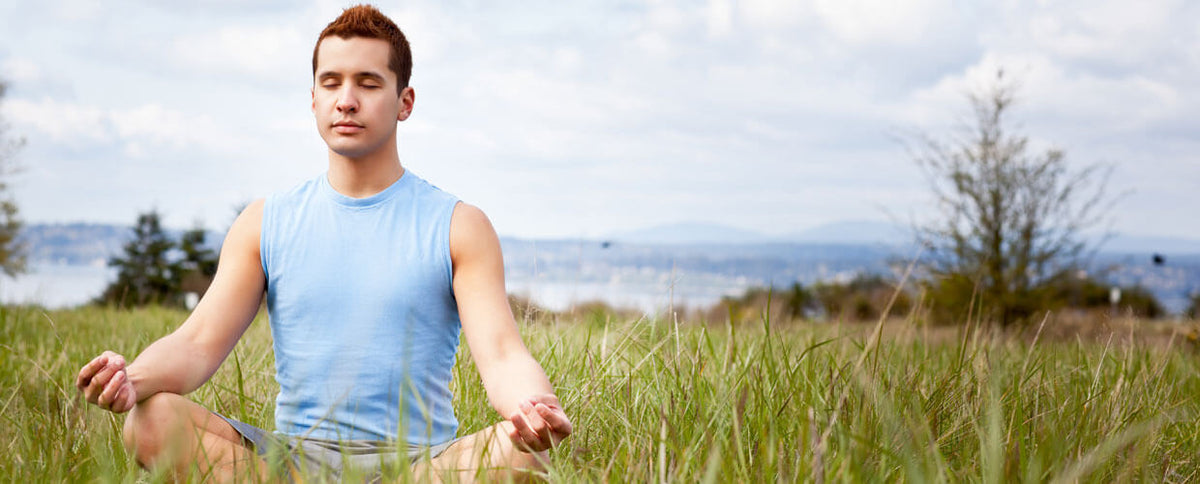Why You Should Do a 5-Minute Meditation Right Now

There was a point when basketball great Kobe Bryant couldn’t sit still for any length of time, nevertheless spend 20 minutes meditating. After meeting George Mumford, a mindfulness teacher from Massachusetts, that changed. Mumford helped the 20-year basketball veteran find peace in stillness—a skill that bore out quantifiable results on the court. Bryan attributed some of the success of his famous 81-point game in 2006 to his meditation practice.
And Bryant’s not alone. Other major athletes, like Lebron James and Arthur Ashe, have spoken out about the ways in which mindfulness practices improved their game. During the height of his career, Michael Jordan famously took on meditation, leading the Bulls to six NBA championships.
Benefits of a 5-Minute Meditation
The point is, meditation delivers benefits that extend beyond stress reduction and mental health. They also affect physical performance and your ability to improve strength. To control your body, it seems, you must first master your mind.
“The more anyone meditates, the more they learn about and become more comfortable in their body,” says Lodro Rinzler, a meditation instructor and co-founder of MNDFL, a meditation studio in New York. “That is highly important for active people.”
The 5-Minute Meditation: Start Small
But as with any new routine, starting is the hardest part. Many meditation newcomers find 20 or 30 minutes to be intimidating. Classes like MNDFL’s can help, as can those from big-city studios like The Den and Inscape, which typically cost $15 or $20. But maybe those aren’t available in your area.
The solution: Start small. Five minutes of mindfulness is exactly what you need to start training for longer sessions. “You don’t run a marathon the first time you lace up your running shoes—you can start with a jog,” says Khajak Keledjian, founder and CEO of Inscape. “That jog is still good for you. Think of shorter mediations as a way to ease into the practice.”
Khajak is so convinced that short sessions are beneficial that he built 5-minute meditation “breathers” into his Inscape app. And they’ve proven massively useful to those who use them. “Just like our phones, sometimes we need to reboot,” says Keledjian. “After all, we are human beings, not human doings.”
And once you’re comfortable with 5 minutes, you can think about moving on to longer sessions—if it feels right. As you build your capacity for stillness, research indicates that you’ll be rewarded with health effects like decreased symptoms of depression and anxiety and lower blood pressure—plus the aforementioned better athletic performance.
How to Practice a 5-Minute Meditation
So are you ready to dive into the zen zone? Here's Rinzler's strategy for 5 minutes of meditation bliss.
What you need
A quiet and comfortable place to sit, like on a pillow.
How to do it: The 5 Minute Meditation
Set a timer for five minutes. Sit cross-legged and take a relaxed but upright posture. Do a short, mental body scan, and then focus on feeling the weight of your bottom pressing into the pillow or chair beneath you. Notice the gentle lift of your spine. Then tune into the natural cycle of your breath. Feel your lungs fill and empty; no need to overthink this basic physical sensation. When your mind wanders, gently bring it back to the breath — without judgment.
The Meditation Practice Plan
Repeat three times weekly. Gradually increase your time meditating until you can sit in stillness for 10 to 20 minutes.




